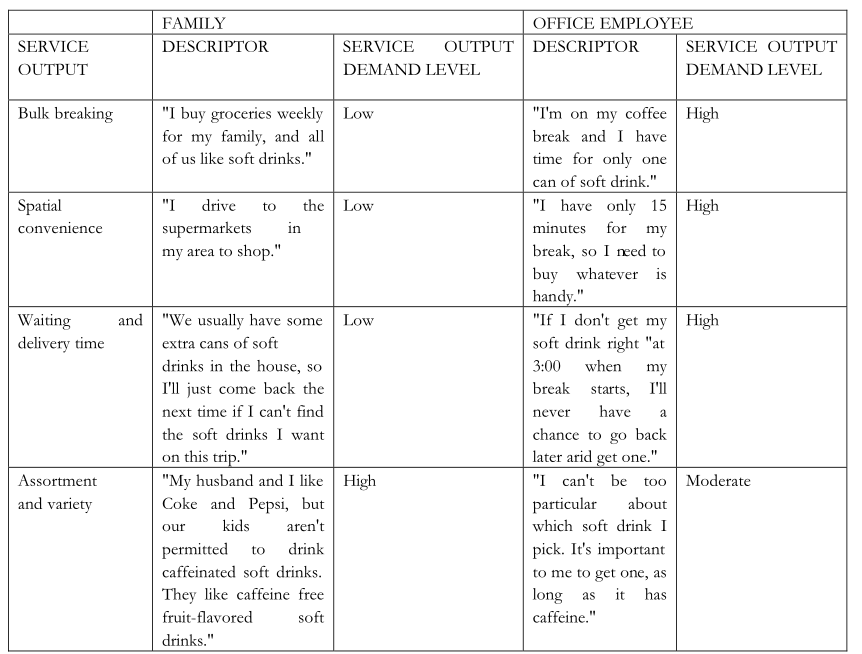One of the fundamental principles of marketing is the segmentation of the market. Segmentation means the splitting, of a market into groups of end-users who are (1) maximally similar within each group and (2) maximally different between groups. But maximally similar or maximally different based on what criterion? For the channel manager, segments are best defined on the basis of demands for the outputs of the marketing channel. A marketing channel is more than just a conduit for product; it is also a means of adding value to the product marketed through it. In this sense, the marketing channel can be viewed as another “production line” engaged in producing not the product itself that is sold, but the ancillary services that define how the product is sold. These value added services created by channel members and consumed by end- users along with the product purchased are called service outputs. Service outputs include (but may not be limited to) bulk-breaking, spatial convenience, waiting and delivery time, and assortment and variety.
End-users (be the final consumers or business buyers) have varying demands for these service outputs. Consider, for example, two different soft drink buyers: an office employee at work, looking for a soft drink during her afternoon coffee break, and a family buying for at-home consumption. Table below outlines the differences in service output demands between the two segments of buyers. The office employee has high demands for all service outputs except assortment and variety (for which her demand is moderate, implying willingness to brand switch within reason), whereas the family has the opposite pattern of service output demands. Clearly, a different marketing channel meets the needs of these two segments of shoppers. The office employee cannot travel to a grocery store to buy a can of soda during her break, nor does she want to buy a six-pack or more of cans of soft drinks. She is willing to pay a slightly higher price for the convenience of getting just a single can of soda close to her office. A vending machine would be an ideal retail outlet for her. The family, on the other hand, would not find the vending machine an attractive retail purchase alternative. The family’s demand for assortment and variety may not be met by a vending machine, and other service outputs are offered at too high a level, resulting in a higher per-unit price than the family wants (or needs) to pay. A local super market does a better job of meeting the family’s service output demands for soft drinks. This example shows how the same product can be demanded with a widely varying set of service outputs, resulting in very different demands for the product- plus service-output bundle by different segments of end-users. An analysis of service output demands by segment is thus an important input into a manufacturer’s marketing plan, and can help increase the reach and marketability of a good product to multiple market segments.
Understanding market demands also requires an understanding of the market’s environmental characteristics and constraints. A market with limited infrastructural
Service Output Demand Differences (an example of segmentation in the soft drink market)

development, for instance, will usually be characterized by consumers with high demands for service outputs such as: 1) spatial convenience (because the consumers cannot travel very easily to remote retail locations), 2) minimal waiting time for good (because consumers will not have sufficiently high disposable income to keep backup stocks” of goods at their homes in case of retail stock outs ), and 3) bulk-breaking (again because, with low disposable incomes, consumers cannot afford to buy large lot sizes of goods, even if doing so would mean a lower price per unit). An example of the impact of these constraints on consumer purchasing is the market for Wrigley’s chewing gum in the People’s Republic of China: Individual packs of gum are sold through many small kiosks and stalls in local marketplaces after traveling a circuitous (and high-cost) route through the countryside. If Wrigley’s is to sell to Chinese consumers, it must recognize their high service output demands in order to construct a marketing channel to meet those demands.

